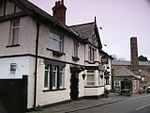Housesteads Roman Fort

Housesteads Roman Fort was an auxiliary fort on Hadrian's Wall, at Housesteads, Northumberland, England. It is dramatically positioned on the end of the mile-long crag of the Whin Sill over which the Wall runs, overlooking sparsely populated hills. It was called the "grandest station" on the Wall and is one of the best-preserved and extensively displayed forts. It was occupied for almost 300 years. It was located 5.3 miles west from Carrawburgh fort, 6 miles east of Great Chesters fort and about two miles north east of the existing fort at Vindolanda on the Stanegate road. The site is now owned by the National Trust and is currently in the care of English Heritage. Finds from the fort can be seen in the site museum, in the museum at Chesters, and in the Great North Museum: Hancock in Newcastle upon Tyne.
Excerpt from the Wikipedia article Housesteads Roman Fort (License: CC BY-SA 3.0, Authors, Images).Housesteads Roman Fort
Military Road,
Geographical coordinates (GPS) Address External links Nearby Places Show on map
Geographical coordinates (GPS)
| Latitude | Longitude |
|---|---|
| N 55.013 ° | E -2.331 ° |
Address
Vercovicium (Housesteads Roman Fort)
Military Road
NE47 6NN , Bardon Mill
England, United Kingdom
Open on Google Maps











